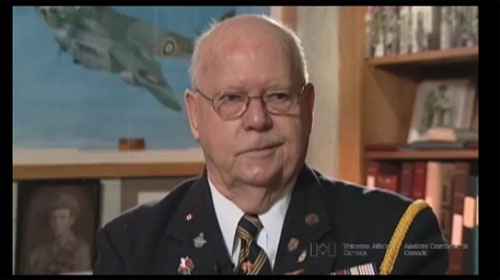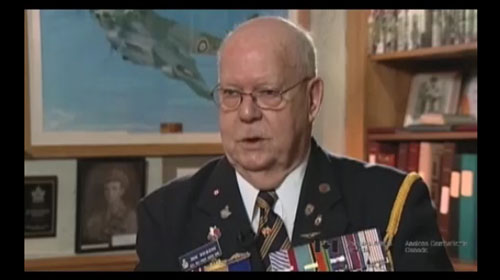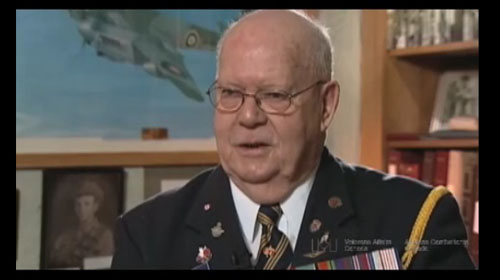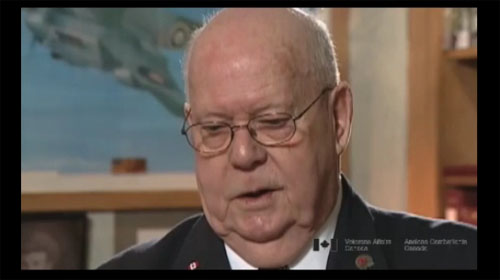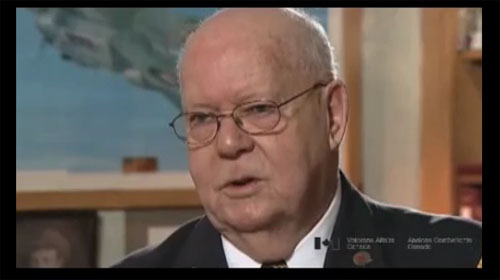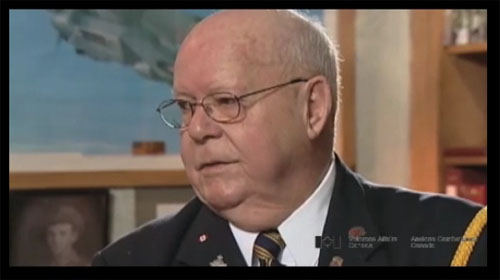Caught By A Night Fighter
Heroes Remember
Caught By A Night Fighter
We were bombing — it turns out — was what they call a buzz bomb
sight in Northern France. They didn’t know what it was, they
they didn’t know. They say there’s a massive pile of stuff that’s
going into these sights along the coast and we don’t know what it
is and these are your targets. And of course they were bunkers
where they shot the flying bombs and of course this was before
they started to hit England with them. So anyway, these were our
targets and the night fighter caught us, that was all. The
engineer was wounded and the motors were shot up. Two of the four
motors were messed up and the pilot said, “Oh we’d better bail
out,” he said, “We’re down to 1000 feet.” And I looked at my
altimeter and I said, “We’re at 11,000 feet is what mine reads.”
“Oh.” he said, “Oh, oh, oh okay.” So he panicked a bit and so we
said ok we’ll see ... the bomb aimer went back and the mid-upper
gunner got together to help the engineer and we decided well
we’ll try and get home. We’re fairly close but we threw
everything out that we could as far as weight went and we were
losing petrol you see. So wireless op sent out a Mayday and
Friston in Southern England answered the call. I had to look up
and see where Friston was and say ok this is where we have to fly
to get there. So we got there and the white cliffs of Dover, you,
you’ve seen them, well there are rivers that come down to the sea
periodically. So there’s a dip in the ... and well would you
believe we were flying in one of those? Up one of those rivers.
The Downs, of course, were behind the cliffs. We were flying
around (along this river) looking for this airdrome and then
finally the mid-upper gunner said, “It’s up there!” Here we were
flying below the airdrome. So we had to fly uphill to land. We
woke up the next morning after we got out of there ... and the
pilot had said at the time, “Get ready were going to, we’ve lost
hydraulics. We’ll ground loop it to port, to left.” Well it
turned out that the right tire had been blown all to hell so when
we touched down of course, we ground looped to the right instead.
Well we all scrambled the hell out of there. So when we got up
the next morning and looked at it we saw if we’d gone over the
way we wanted to go we’d have gone over a 200 foot cliff into
the English Channel.
Related Videos
- Date modified:



